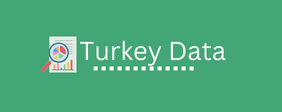Photo Credit: martincron via Compfight cc A/B testing software or hire a team of developers and designers to set up and handle this. Tools such as Optimizely, Unbounce and Leadpages are affordable and easy to use. Google Analytics is Charities don’t need to entirely free and offers the possibility to run content experiments, through which you can test several versions of a landing page. Donation forms Charities can learn plenty from optimisation efforts on e-commerce checkout pages when it comes to improving the user experience for their donors.
The e-commerce checkout process
is the equivalent of a charity’s donation process, and bc data mexico there is already a vast sea of information on how to improve checkout pages and forms available online. Many donation forms are set-up to capture as much information as possible about a charity’s supporters. Take a look at your own donation form: are you asking for a telephone number? How did you hear about us? Do you include a field for comments, have several checkboxes for email list opt-ins, require a specific project designation? Do you force your supporters to complete a captcha puzzle before they can donate? Asking for all this information can be tempting, but there is an unflattering term for it, “form creep”.
Unnecessary steps and questions
lengthen the giving process. They will irritate a portion of your potential donors, causing them to abandon the page without giving and lowering conversions. Security Many web users are concerned about the risk of credit card and identity theft online. By transferring your site to a secure server (https), you can already alleviate some of your users’ concerns. However, not all users are familiar with https, so there is more you can do to make them feel safe, through targeted and timely reassurances.
Provide visible indication that your
site is secure, e.g. a recognised security seal located in close proximity to anxiety-producing steps (= payment information fields). Besides locating the seal near to where donors enter sensitive information, encapsulation of payment fields (i.e. boxing them off with a distinct background colour) is another technique that visually reinforces to the donor that their information will be secure. Payment Options PayPal, credit card, direct debit, bank transfer,..
your supporters will have
a variety of payment preferences, so make it easy for them to go through with a donation or payment. Online businesses cannot afford to lose out on conversions simply because they cannot support certain payment methods, neither should charities. Search for wheelchair technology alone Marketing Online businesses often have a dedicated budget for paid search advertising and search engine optimisation. Many charities may have smaller marketing budgets, but will still be able to get basic SEO right, and with AdWords grants from Google for Non-Profits,
When running your
AdWords campaign, don’t forget – always be testing! Keep technology up to date Mobile optimisation for e-commerce is already an old hat, consumers are expecting a website – and the checkout process – to be mobile-friendly, and there is no excuse to egypt data deliver a poor user experience on mobile devices in 2015. Summary Charities can learn a great deal from e-commerce to increase their online donations. By reviewing some aspects of their setup, they will make the donation process for supporters easier: Always be testing: never stop testing new landing pages, designs, and forms.

